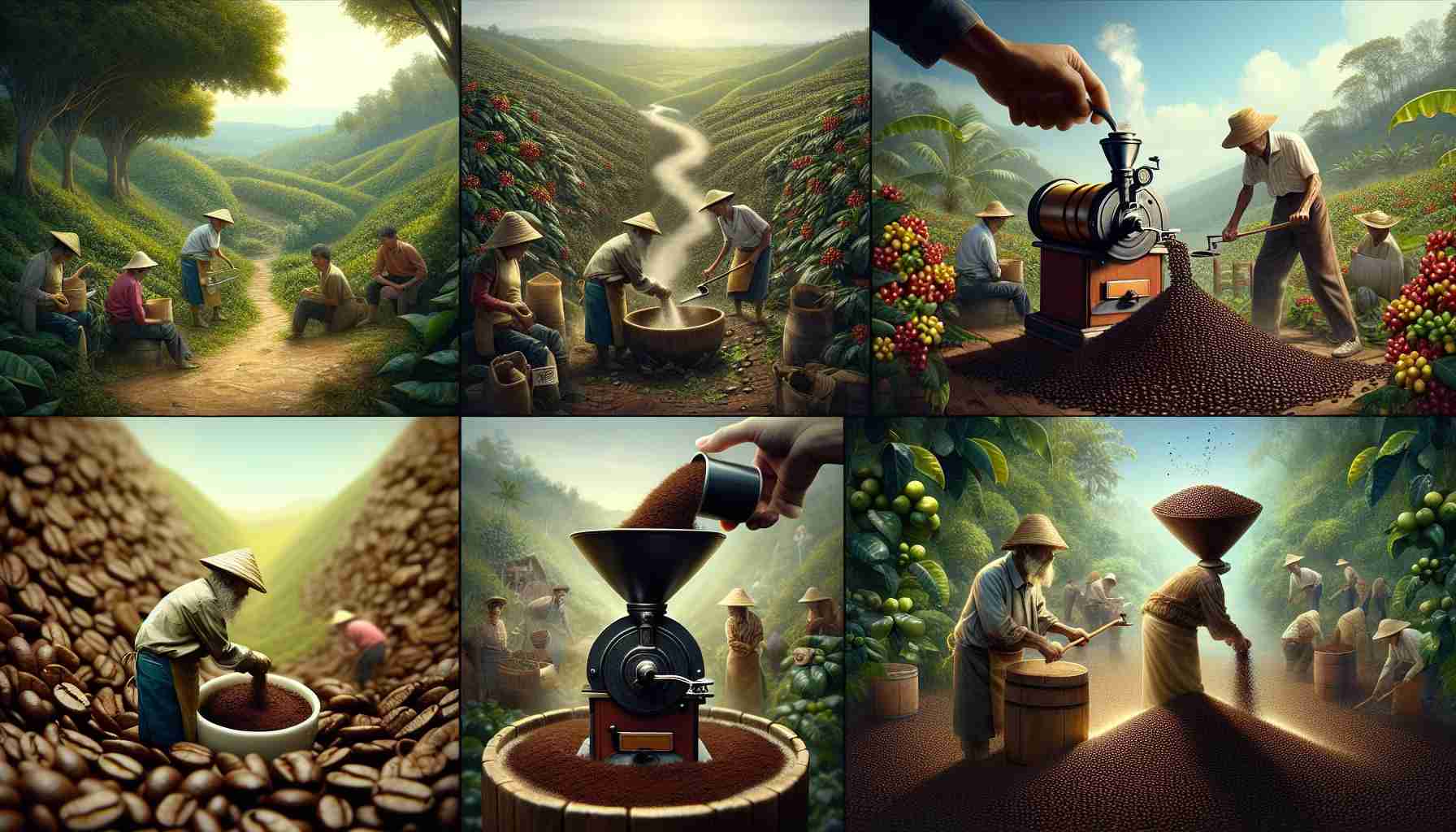Coffee beans undergo a fascinating transformation from vibrant cherries on the plant to the fragrant grounds in your cup. The harvesting process involves gathering the ripe red cherries, stripping, drying, roasting, and finally grinding them to perfection.
This meticulous process is not for the faint-hearted. The challenging terrain where coffee bushes thrive hinders mechanization, making it a labor-intensive industry. Unlike other crops, coffee requires three to four years to mature, limiting farmers’ flexibility to adjust to market demands.
Leading coffee-producing countries like Brazil, Vietnam, and Colombia rely heavily on small farm owners and hired labor for harvesting. Once the beans are harvested, they pass through various hands in the supply chain, often ending up with middlemen who hold significant bargaining power before reaching consumer-facing companies.
Although historically prone to exploitation, the coffee industry is undergoing a positive shift towards transparency and sustainability. Organizations like the Rainforest Alliance are working to ensure that environmental and social standards are upheld throughout the supply chain.
Despite the challenges, the coffee market outlook appears favorable for consumers. Prices are expected to stabilize in the medium term, encouraging farmers to increase their supply. With a projected surplus in coffee production next year, the supply-demand balance is set to improve, ensuring that your daily coffee fix remains accessible.
Uncovering the Hidden Realities Behind Your Cup of Coffee Beans
The journey of coffee beans from plant to cup is indeed mesmerizing, but there are deeper layers to this process that often go unnoticed. As we delve into the world of coffee production, we uncover some lesser-known facts and shed light on important questions surrounding this beloved beverage.
Key Questions:
1. What are the environmental impacts of coffee production?
Coffee cultivation can have significant environmental consequences, including deforestation, water pollution from agrochemicals, and soil degradation. Sustainable farming practices and certifications such as Shade-Grown Coffee can help mitigate these impacts.
2. How do labor practices in the coffee industry affect producers?
The reliance on manual labor in coffee production can lead to issues such as exploitation, low wages, and poor working conditions. Fair trade certification aims to address these challenges by ensuring fair wages and safe working environments for coffee farmers.
3. What role does climate change play in the future of coffee production?
Climate change poses a serious threat to coffee cultivation, with rising temperatures and unpredictable weather patterns affecting crop yields and quality. Farmers are increasingly adopting climate-smart agricultural practices to adapt to these challenges.
Advantages and Disadvantages:
Advantages:
– Coffee production provides livelihoods for millions of people in developing countries, contributing to economic growth and social development.
– The global coffee market offers a wide variety of flavors and profiles, catering to diverse consumer preferences.
– Coffee has been linked to various health benefits, including improved cognitive function and reduced risk of certain diseases.
Disadvantages:
– The volatility of coffee prices can negatively impact the income stability of coffee farmers, leading to financial insecurity.
– Issues such as overproduction, market speculation, and trade barriers can distort the coffee market, affecting both producers and consumers.
– Unsustainable farming practices and deforestation associated with coffee cultivation can harm ecosystems and biodiversity.
In conclusion, while enjoying a cup of coffee may seem like a simple pleasure, the journey of coffee beans is fraught with complexities and challenges. By understanding the deeper issues surrounding coffee production, consumers can make informed choices to support a more sustainable and ethical coffee industry.
Suggested related link to main domain: National Coffee Association


